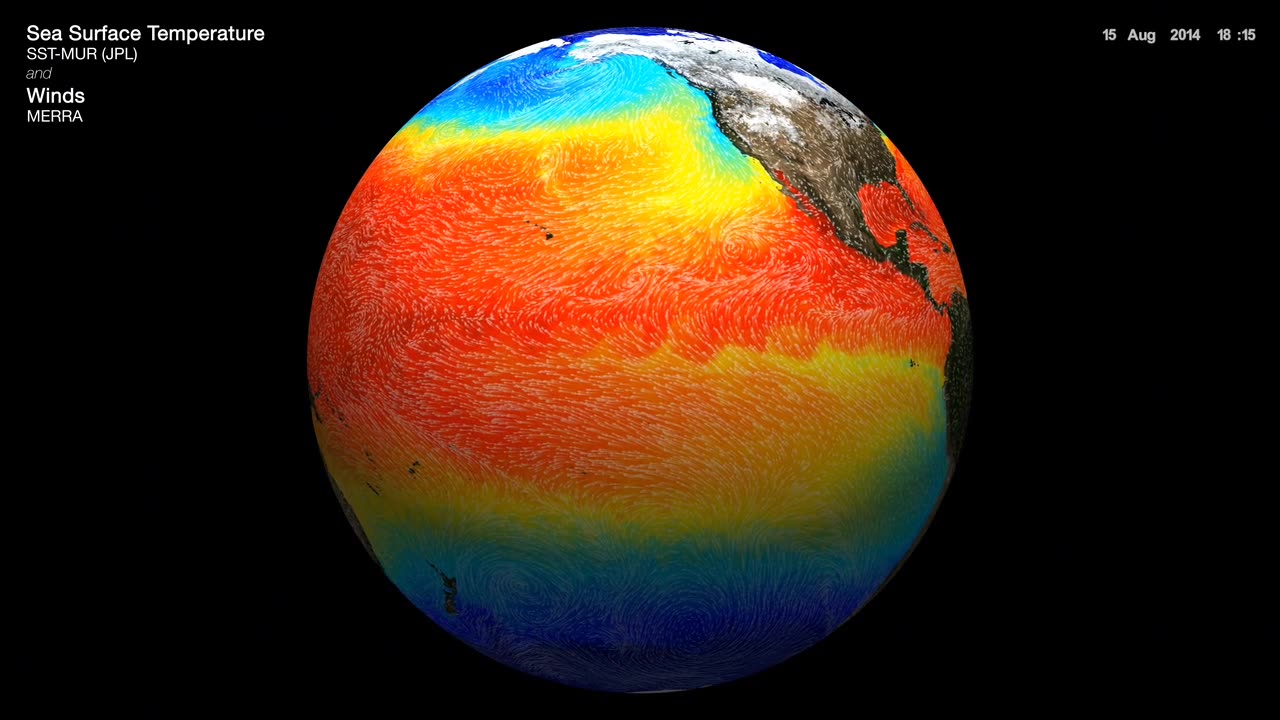Premium Only Content

Earth: A System of Systems (updated)। NASA
In order to study the Earth as a whole system and understand how it is changing, NASA develops and supports a large number of Earth-observing missions. These missions provide Earth science researchers the necessary data to address key questions about global climate change.
This visualization reveals that the Earth system, like the human body, comprises diverse components that interact in complex ways. Shown first, the Multi-Scale Ultra-High Resolution (MUR) sea surface temperature (SST) dataset combines data from the Advanced Very High-Resolution Radiometer (AVHRR), Moderate Imaging Spectroradiometer (MODIS) Terra and Aqua, and Advanced Microwave Spectroradiometer-EOS (AMSR-E) instruments. Constantly released into the Earth’s atmosphere, heat and moisture from the ocean and land influence Earth’s weather patterns—represented here as wind speeds from the Modern-Era Retrospective analysis for Research and Applications (MERRA) dataset. Moisture in the atmosphere—represented as water vapor (also from MERRA)—forms clouds (shown here using cloud layer data from the NOAA Climate Prediction Center) and precipitation. Precipitation (data from GPM IMERG) significantly impacts water availability, which influences soil moisture (data from NASA-USDA-FA) and ocean salinity.
While scientists learn a great deal from studying each of these components individually, improved observational and computational capabilities increasingly allow them to study the interactions between these interrelated geophysical and biological parameters, leading to unprecedented insight into how the Earth system works—and how it might change in the future.
-
 1:03:33
1:03:33
The Dan Bongino Show
20 hours agoSunday Special with Mike Benz, Michael Knowles, Rep. Tim Burchett and Rep. Andy Harris - 02/23/25
279K882 -
 1:36:21
1:36:21
Sarah Westall
7 hours agoViolence Erupting in the Panama Canal, Identifying Enemy Infiltration, Psyops Ongoing w/ Michael Yon
34.9K27 -
 1:56:25
1:56:25
Nerdrotic
9 hours ago $11.98 earnedThe Red Pyramid's Hidden Secrets | Forbidden Frontier #091
48.9K13 -
 2:08:53
2:08:53
vivafrei
18 hours agoEp. 252: Liberals DISQUALIFY Candidate from Race! DOGE Wins & Loses; Rumble Sues BRAZIL! & MORE!
133K228 -
 1:15:12
1:15:12
Josh Pate's College Football Show
8 hours ago $15.68 earnedCFB’s Top 12 Programs | TV Executives & Our Sport | USC Changes Coming | Early Championship Picks
66.2K2 -
 LIVE
LIVE
Vigilant News Network
12 hours agoUK Government BUSTED in Secret Plot to Extract Your Data | Media Blackout
1,700 watching -
 1:03:32
1:03:32
Winston Marshall
3 days ago"War On Children!" The DEMISE Of The West Starts With Schools - Katharine Birbalsingh
111K65 -
 48:02
48:02
Survive History
15 hours ago $6.57 earnedCould You Survive as a Sharpshooter in the Napoleonic Wars?
60.8K3 -
 12:03
12:03
Space Ice
16 hours agoSteven Seagal's China Salesman - Mike Tyson Knocks Him Out - Worst Movie Ever
44.6K16 -
 11:37
11:37
Degenerate Jay
15 hours ago $14.75 earnedJames Bond Needs Quality Over Quantity From Amazon
92K8